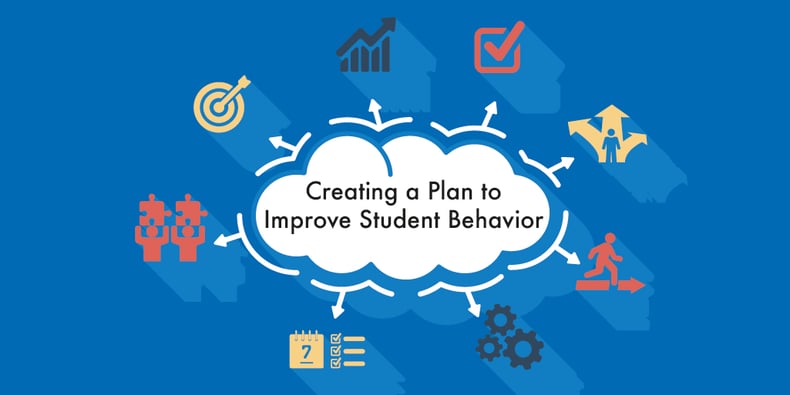
We are constantly striving to enhance the learning process, but one of the biggest challenges we may face when trying to effectively teach our students is their behavior. Students come to us without the ability to cope and manage in the classroom—they can often struggle to focus and attend to the learning. Some of these behaviors and more common and more extreme than they were in the past.
Because of this, it is important for teachers to be ready for these students stepping into their classrooms. Having a plan is always important, so here is a guide for how to put together a data-driven behavior improvement plan for an individual student.
Screening Your Students
The first step in the system has to be a screener of some sort. There needs to be a way to know which student, which behavior, and how often. Having this information at the start will assist in setting up the plan with some baseline data (which will be used in the student chart mentioned below).
The screener can be a few different things, but is typically based around an office discipline referral, or ODR. If there isn’t a system set up to help with this already, there should be. Once a student has a certain number of behavioral issues a certain number of times, there should be a plan in place to intervene. For example, the second trip the office results in a parent meeting, the third classroom issue results in a behavior contract, etc. This basic data will lead the teacher to make decisions on the following steps:
- Targeting the behavior
- Intervention selection
- Conferencing with the student
- Tracking data to (hopefully) show progress
- Knowing if an intervention worked
Taking Action
Ready to tackle this challenge head-on? Here is how these steps work in the classroom:
- Targeting the behavior: Most of the time, a student who has been sent to the office numerous times will be sent for the same behavior—this should be the starting point for the target behavior. When it's at this point, I have found it is better to focus on one or two behaviors instead of all of them. By creating a plan for the target behavior, it allows for better and easier data collection.
There are two caveats with this. First, make sure you pick the most important behavior to focus on. If the student is having trouble getting along with peers and won’t quit tapping his pencil, don’t put a plan in place to fix the pencil tapping. Second, if you focus on one or two behaviors for the plan, try to ignore the others while putting the plan into place. This can be tough—and for some kids, this may not be possible. - Intervention selection: These can be pretty straightforward, and most teachers with experience will have a few tools in the toolbox when it comes to interventions. Asking for help from social workers, counselors, and school psychologists is a good idea, too. If you need a starting point, www.interventioncentral.org is a great place to begin. There is a wide variety of behaviors included, and research-based strategies can be accessed for most of them.
- Conferencing with the student: Once the targeted behavior and intervention method have been selected by the teacher, it’s time to talk about it with the student. As a teacher, the goal is to get as much buy-in from the student as possible. Since the focus will be on tracking data, the results can be tied to rewards or incentives for the student. This also helps the student since the teacher can speak about the data more objectively.
This conference should take place in a one-on-one setting in private. Both the teacher and the student should be in a calm, learning-ready state of mind. Again, trying to keep it objective and non-emotional is the best way to make sure it is a safe situation for the student. - Tracking data to (hopefully) show progress: Part of increasing student buy-in of the entire process is increasing student ownership of the plan. To help with this, have the student chart the data daily or weekly. Whatever behavior is being tracked, there should be a goal for frequency. By starting with a baseline and knowing what the goal is, the teacher can create a simple line chart with a trend line on it. The student then can chart each data point and visually see if progress is being made—or if it isn’t.
- Knowing if an intervention worked: This can be difficult depending on the circumstance. Behavior is very nonlinear and so many variables can come into play. I would suggest sticking with a daily intervention for at least two weeks before giving up on it or changing it. It is easy to throw up your hands on day two and think, “This isn’t working.” Consistency over time is critical, and it is important to give the plan a fair chance for the student to succeed and the intervention to work.
This probably goes without saying, but parents should be part of the process in each step as well. They are a critical piece to helping support the plan. Communicate with them about the student’s data and progress as often as you communicate with the student.
There are also ways to improve efficiency around the system, especially when it comes to data collection—click here to learn how we can effectively use technology to help in this area. With a step-by-step plan, students and teachers can work as a team to help improve behavior, learning, and achievement.